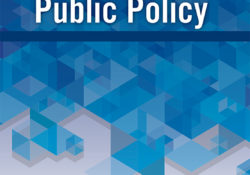eric.ed.gov har udgivet: This study details parents’ and students’ current thinking about math, science and technology (MST) education and their satisfaction with the existing curriculum which most experts see as vastly below world-class standards. The study finds just 25% of Kansas/Missouri parents think their children should be studying more math and science; 70% think things “are fine as they are now.” The report also explains why parents and students are so complacent in this area and what kinds of changes might be helpful in building more interest in and support for more rigorous MST courses. The findings are based on a random survey of 1,472 parents and 1,295 middle and high school students in Kansas and Missouri, probing their attitudes on math, science, and to a lesser extent, technology education.… Continue Reading →
Like this:
Like Loading...
eric.ed.gov har udgivet: Business leaders in Missouri cannot find the science, technology, engineering and mathematics (STEM) talent they need to stay competitive. Students’ lagging performance in K-12 is a critical reason why. The good news is that the nation’s most effective STEM education programs can help turn the tide. Missouri students have made some progress in math over the past decade. Not enough students have the chance to learn rich and challenging content to prepare them for college and careers, and few eighth graders have teachers with an undergraduate major in math or science. Large racial and ethnic achievement gaps persist in Missouri, as in all states. Link til kilde
Like this:
Like Loading...
tandfonline.com har udgivet en rapport under søgningen “Teacher Education Mathematics”: Abstract We provide a side-by-side comparison of school and teacher growth measures estimated from different value-added models (VAMs). We compare VAMs that differ in terms of which student and school-level (or teacher-level) control variables are included and how these controls are included. Our richest specification includes 3 years of prior test scores for students and the standard demographic controls; our sparsest specification conditions only on a single prior test score. For both schools and teachers, the correlations between VAM estimates across the different models are high by conventional standards (typically at or above 0.90). However, despite the high correlations overall, we show that the choice of which controls to include in VAMs, and how to include them, meaningfully influences school and… Continue Reading →
Like this:
Like Loading...
